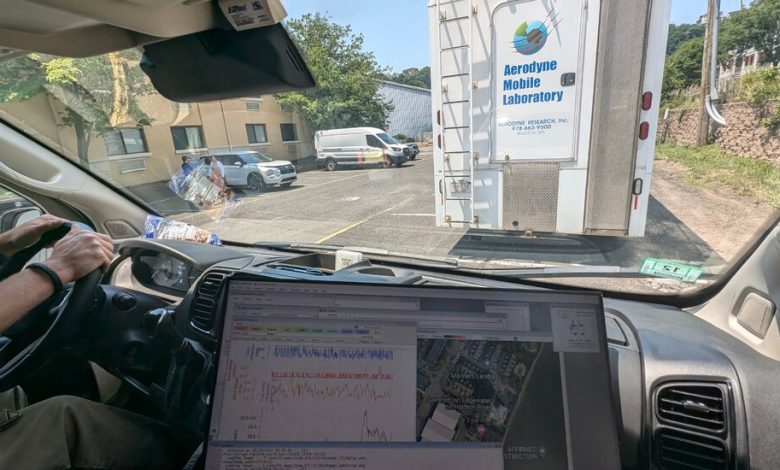A Ride in a Chemical-Sniffing Van Shows How Heat Amps Up Pollution

Two vans loaded with precision instruments trundled along the streets of New York and New Jersey in the heat earlier this week, sniffing for toxic chemicals in the air.
They detected spikes in methane, a potent greenhouse gas, most likely from leaks, or from natural-gas-burning buses. They found plumes of nitrous oxide, possibly from wastewater. And all along the ride, they logged elevated levels of ozone, the main ingredient of smog, as well as cancer-causing formaldehyde — both of which form readily in hot weather.
The bottom line: The streets are dotted with pollution hot spots. And the heat makes pollution worse.
“If you want a chemical reaction to go faster, you add heat,” said Peter DeCarlo, an atmospheric air pollution researcher at Johns Hopkins University who’s leading an effort to use the vans to measure emissions along Louisiana’s petrochemicals corridor. “On hotter days, it’s the same idea,” he said.
Air pollution surges when temperatures rise, adding to the harms wrought by global warming. It’s one reason cities and counties across the Eastern United States hit by a heat wave this week have been issuing air pollution alerts.
The past three days, New York City has warned that ozone in the city is at levels “unhealthy for sensitive groups.” Detroit and Chicago have also issued air quality alerts this week. Drivers in Ohio, Michigan, Kentucky and Indiana have been urged to avoid refueling before 8 p.m., and to car pool or refrain from driving as much as possible, to cut down on fumes.
